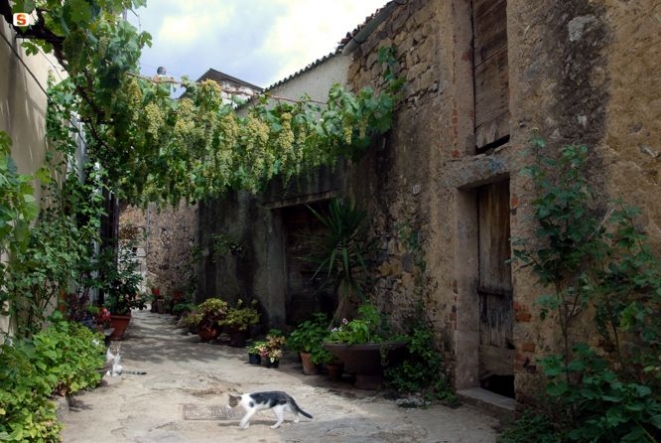The Crocks of Orani
Finds of likely nuragic writing
The discovery of the evolutionary history of the Sardinian population in the Island has ever been pursued by academics for the beginnings, for the understanding and the knowledge of own origins. The finding of the “Crocks of Orani”, in 1994, is a certain evidence.
The finds, on whose nuragic nature there are no doubts, deserve a specific attention for the inscriptions that are engraved. About a possible forgery of them, people discussed for the year of the discovery, when they were shown to the archaeologist emeritus, the Professor Lilliu, during the conference about the protosardinian religiousness organized in Orani.
The counterfeit of the finds, supported by prestigious academics, is fully opposed by a parallel cultural current of likewise deserving academics who consider the four crocks of Orani as the obvious proof of a primary sample of nuragic alphabetic symbols. Indeed, one of them has some features of archaic Phoenician typology, even typical of the Stele of Nora.

That would compromise, supposing solidified historic and archaeological bases, the symbolic Phoenician origin of this. In this case, the assignment to the Sardinian population would be consequent.
In addition to the crock craved by a capsized human figure and to that on which it is engraved a likewise stylized human figure, it exists the fourth crock with an extreme importance for the scratch, subject of a cultural quarrel on its authenticity. It is concerning to the Carthaginian divinity, Tanit.
Indeed, it is possible to glimpse a double portrayal of the Goddess, protector of the city: on the left, it is engraved the typical symbol of the truncated pyramid having a rectangular plank on which there are the sun and the waning moon. On the right, the so-called “second Tanit” presents downwards the protosinaitic letter “waw” and, in the proximity of the right arm, the less visible letter “yod”.
About their authenticity, there has been a contrast of opposing academic hypotheses and opinions. The support justifications on their total authentic nature put, as a supporting reason, the forgery and the confusion of the academic and institute fulcra of the official restoration of the Sardinian protohistory and not only.
Approving their true or credible origin, would implicate an appreciation, that is also religious, of the Sardinian and Carthaginian history, being present, during the nuragic age, some divination marks with an original assignment to the population that came to the Sardinian territory.
That would guarantee the existence of models of cult of the Goddess of fertility and good auspice that are previous to Carthaginian people and typical of the native population. The finding of the four crocks of Orani becomes definite, beyond every doubts, as a clamorous case relative to a discovery that today must be revealed in its originality.